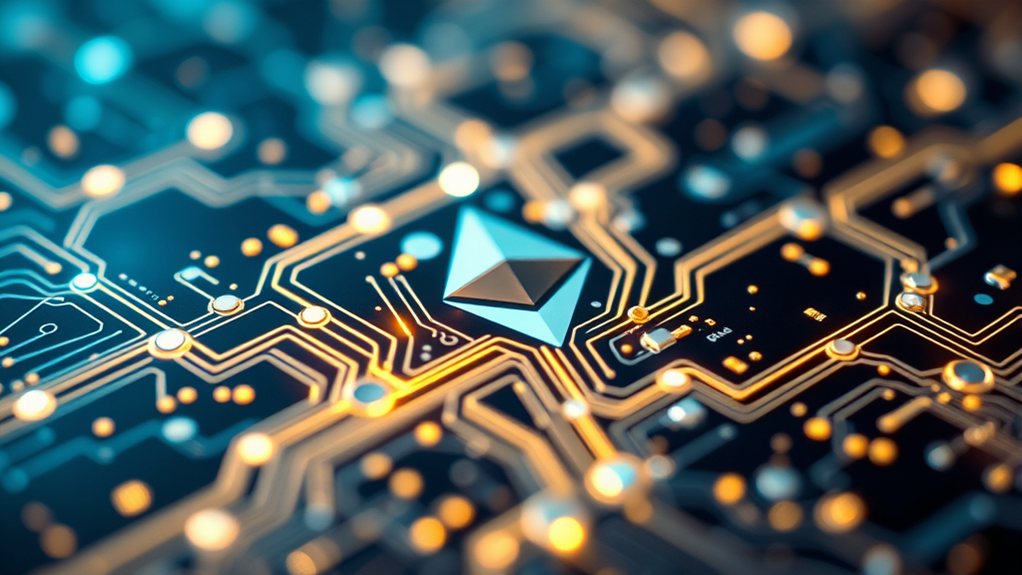The Ethereum Virtual Machine (EVM) is the core processing engine of the Ethereum blockchain. It executes smart contracts and powers decentralized applications across a global network. The EVM runs on a stack-based architecture with 256-bit processing, converting human-readable code into machine-executable bytecode. It uses a gas system to prevent abuse and guarantee security. Many other blockchains now offer EVM compatibility, expanding its ecosystem and influence throughout the cryptocurrency world.

The Ethereum Virtual Machine (EVM) stands at the heart of the Ethereum blockchain, powering its ability to run smart contracts and decentralized applications. It's a special type of virtual computer that lives on thousands of connected machines around the world. Unlike regular computers that run programs like games or web browsers, the EVM is designed to execute smart contracts in a way that's reliable, secure, and identical across all computers in the network.
The EVM has a unique architecture built around a stack-based system with 256-bit word size. This technical design helps it process information in a consistent way. When developers write smart contracts, they typically use languages like Solidity. These contracts get compiled into bytecode – instructions the EVM can understand. Much like Earned Value Management, the EVM provides early visibility into potential problems within the blockchain system. The machine reads these instructions one by one, keeping track of where it is with a program counter.
The EVM's stack-based architecture processes code one instruction at a time, turning human-readable Solidity into machine-executable bytecode.
One of the EVM's most important features is its gas system. Every operation costs a small amount of "gas" – a unit that measures computational effort. Users pay for this gas with Ether, Ethereum's native currency. This system prevents infinite loops and stops people from abusing the network. If a contract runs out of gas during execution, it stops and any changes revert back to their original state.
Security is a top priority for the EVM. It runs in a sandboxed environment, meaning contracts can't access other parts of the blockchain they shouldn't. The EVM also supports important cryptographic functions that allow for secure digital signatures and transaction verification. These features help keep the Ethereum network safe from attacks.
The EVM's design has become so popular that many other blockchains have adopted it. Networks like Binance Smart Chain, Polygon, and Avalanche are "EVM-compatible," meaning they can run the same smart contracts as Ethereum. This compatibility creates a larger ecosystem where developers can easily move their applications between different blockchains. The open-source nature of the EVM encourages collaborative development across the entire blockchain community.
As blockchain technology evolves, so does the EVM. Developers are constantly working to make it faster, more efficient, and able to handle more transactions. The shift to Ethereum 2.0 brings significant changes, including a change from proof-of-work to proof-of-stake consensus. This change aims to make Ethereum more energy-efficient and scalable. The transition to this new consensus mechanism has already reduced energy consumption dramatically while enhancing the platform's overall scalability.
The EVM continues to be a foundational technology in the blockchain world. It enables complex applications to run in a decentralized way without needing a central authority. As more industries explore blockchain solutions, the EVM's importance as infrastructure for the next generation of internet applications only grows.
Frequently Asked Questions
How Secure Are Evm-Based Blockchain Networks?
EVM-based blockchain networks offer strong security through sandboxed execution and gas limits. However, they aren't immune to threats.
Major vulnerabilities include reentrancy attacks, smart contract bugs, and cross-chain bridge weaknesses. The DAO hack in 2016 exposed serious flaws.
Security depends on thorough audits, tested code libraries, and formal verification. Network security continues to evolve as developers address emerging risks like MEV attacks.
Can EVMS Interact With Non-Evm Blockchains?
EVMs can interact with non-EVM blockchains, but it's challenging. Special bridges connect these different systems, allowing assets to move between them.
These bridges use wrapped tokens, oracles, and cross-chain messaging protocols. While interaction is possible, it comes with risks like hacks and technical complications.
New technologies like zero-knowledge proofs and interoperability protocols are making these connections safer and more efficient. Developers continue to improve these cross-chain solutions.
What Programming Languages Are Used for EVM Smart Contracts?
Several programming languages are used for EVM smart contracts.
Solidity is the most popular, with JavaScript-like syntax.
Vyper offers a Python-inspired alternative focused on security and simplicity.
Yul serves as an intermediate language for high-performance contracts.
Previously, developers used LLL and Serpent, but these are now deprecated.
Newer options include Fe (Rust-inspired), Flint, and Bamboo, which emphasize safety and formal verification.
How Does EVM Scaling Impact Transaction Fees?
EVM scaling directly reduces transaction fees on Ethereum. As the network becomes congested, fees rise considerably.
Solutions like Layer 2 rollups batch multiple transactions together, cutting costs by up to 100-1000x. Since 2021, Layer 2 adoption has dropped average fees by over 90%. Median fees fell from $20 to under $2.
Recent upgrades like EIP-1559 have made fees more predictable while future improvements should enable sustainably lower costs.
Who Maintains and Updates the EVM Specifications?
The Electronic Industries Alliance (EIA) maintains and updates the EVM specifications through a consensus process.
They released the most recent version, EIA-748-D, in 2019.
The National Defense Industrial Association (NDIA) partners with EIA, providing industry expertise and developing supplemental guidance.
Various government agencies like the Department of Defense and NASA adopt these standards.
International organizations also reference EVM concepts in their own standards.










